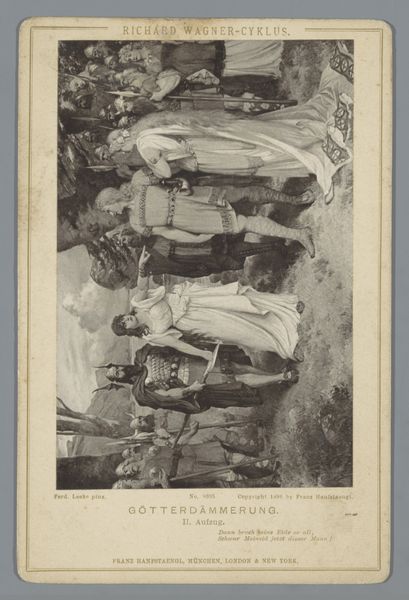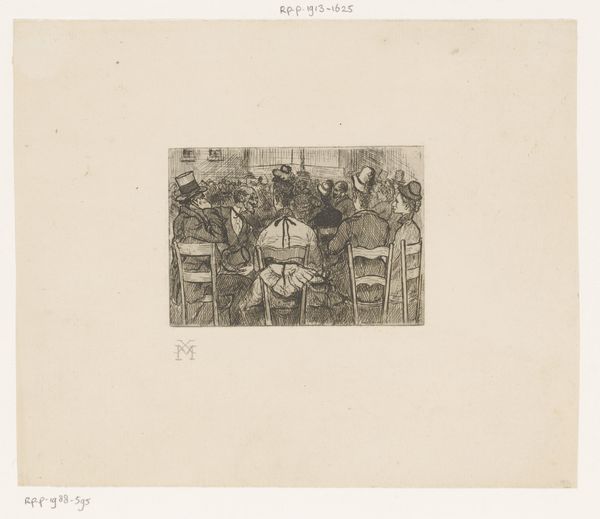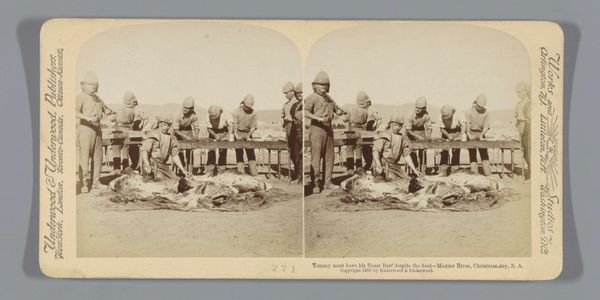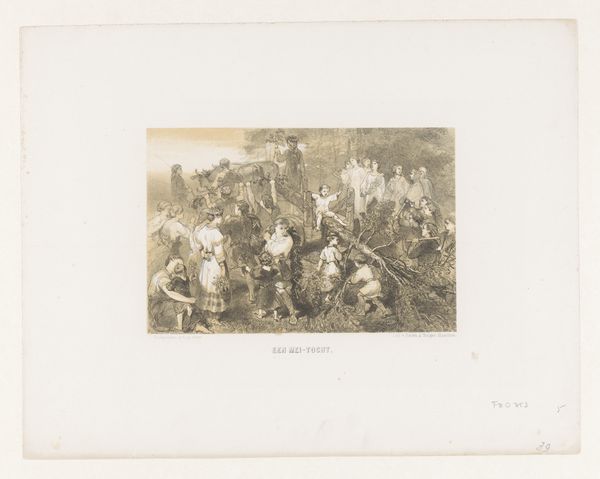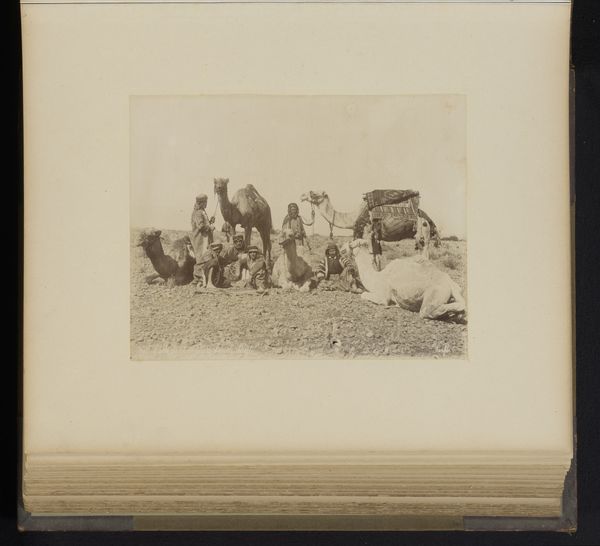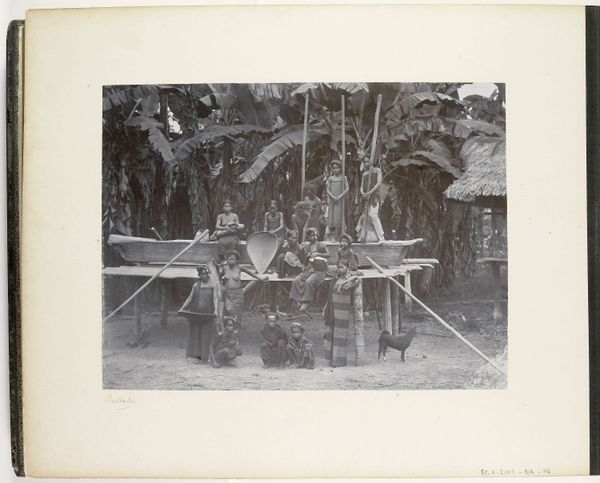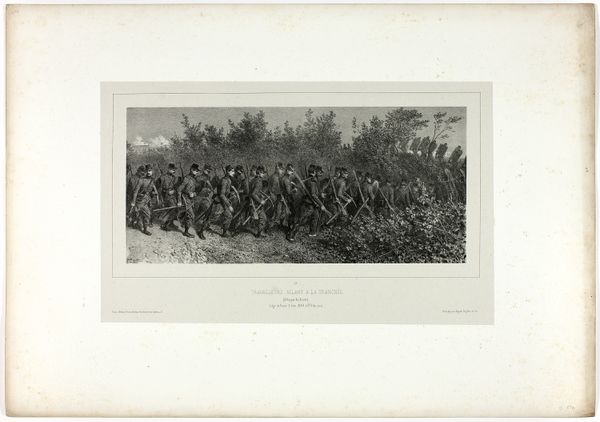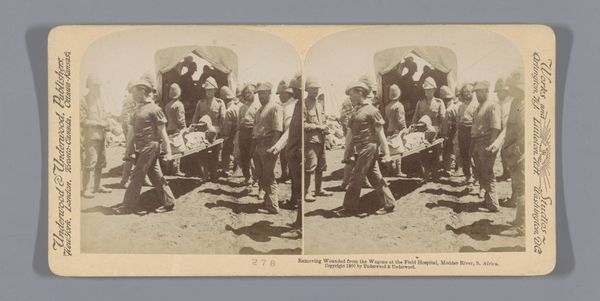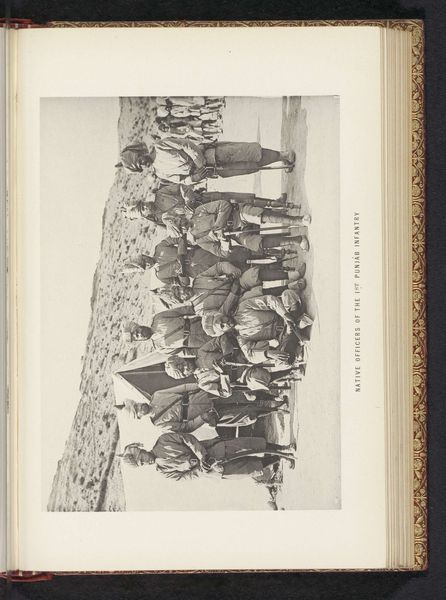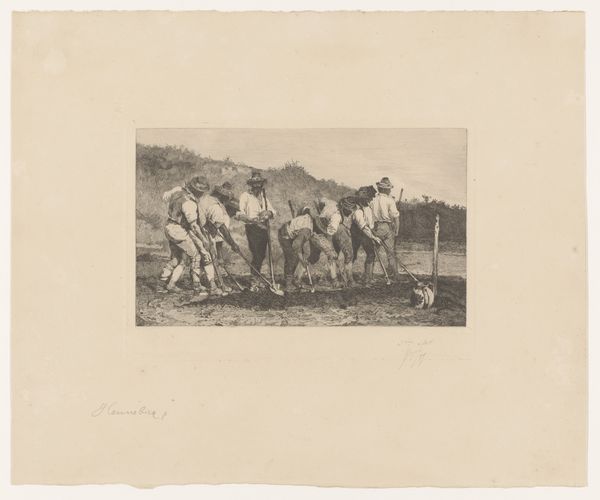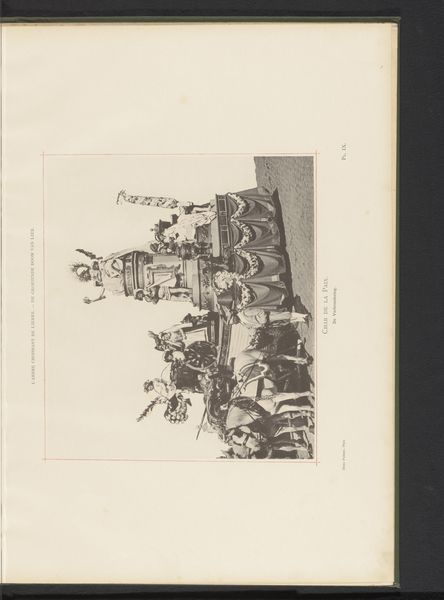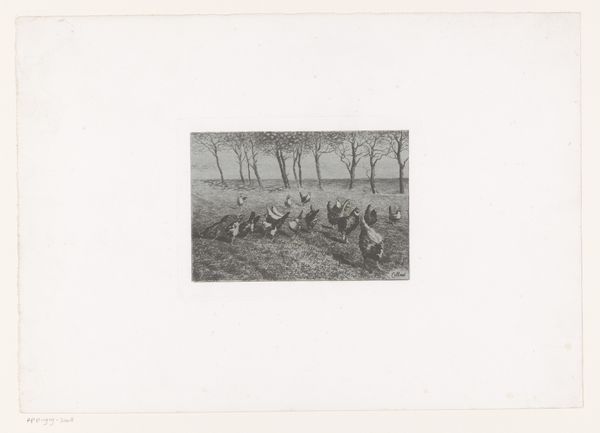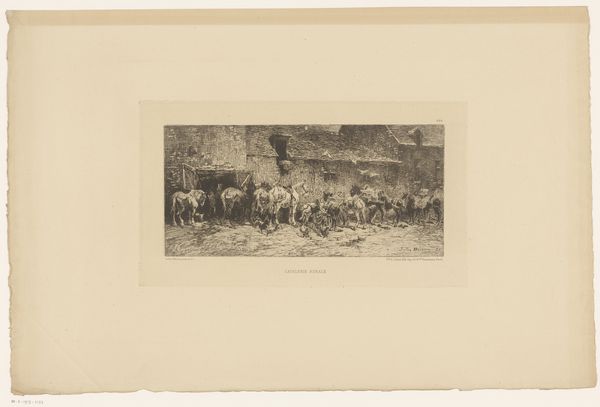
print, photography
#
portrait
#
16_19th-century
# print
#
photography
#
group-portraits
#
realism
Dimensions: height 23.5 cm, width 32 cm
Copyright: Rijks Museum: Open Domain
Curator: Here we have an albumen print, a photograph taken around 1874, entitled "Group of Red Cross Workers" and attributed to an anonymous artist. It resides here at the Rijksmuseum. The workers are arranged in front of tropical foliage. What are your initial thoughts? Editor: My immediate reaction is the stark contrast. Despite the apparent camaraderie, the uniformity of their dress and the tools of their trade almost weaponize them. It's hard to reconcile these men with the modern, peace-focused idea of the Red Cross. Curator: Indeed. Let’s consider the context. Photography in this period, particularly of colonial subjects, played a significant role in shaping Western perceptions. The image itself seems to be enforcing the racialized social structures in colonial contexts through its subjects' appearance. There is also the obvious tension arising from a local chapter's alignment with an organisation that still operates according to Western paradigms. Editor: Precisely. And to push on your excellent points, there are significant questions here about labor. We need to be honest about who the members of the "Group" are; the context is crucial here as a former Dutch colony. How were these men compensated? What were the power dynamics at play? I want to see what's *not* shown in this image! Curator: This speaks to the broader colonial framework, wouldn't you say? We must decolonize these stories and ask ourselves, as the contemporary art world requires, who the colonizers left out! Let us give voice to them! Editor: That’s it exactly. I keep looking at the material realities: the stiff formality imposed by the photographic process of the time. It reminds me of the very real and forced uniformity being pushed onto this group as colonizers wanted a photo opportunity to document "successful progress." The production itself hides this! Curator: And look at the lush backdrop, serving as a stage for colonial theatrics. Editor: It’s chilling, right? Looking through our 21st-century lens, it’s so obvious that these men aren’t active agents of "peace keeping." It’s performative charity at best! Curator: Agreed. The piece functions as an artefact but also speaks to our contemporary moment and its politics, particularly with NGOs, volunteer groups, and foreign interests acting under similar premises. Editor: Precisely. Examining this work is less about pure appreciation of early photography and more an excavation. We're unearthing how labor, representation, and colonial power coalesce in a single, potent image. It demands we consider the untold stories behind those inscrutable expressions.
Comments
No comments
Be the first to comment and join the conversation on the ultimate creative platform.
